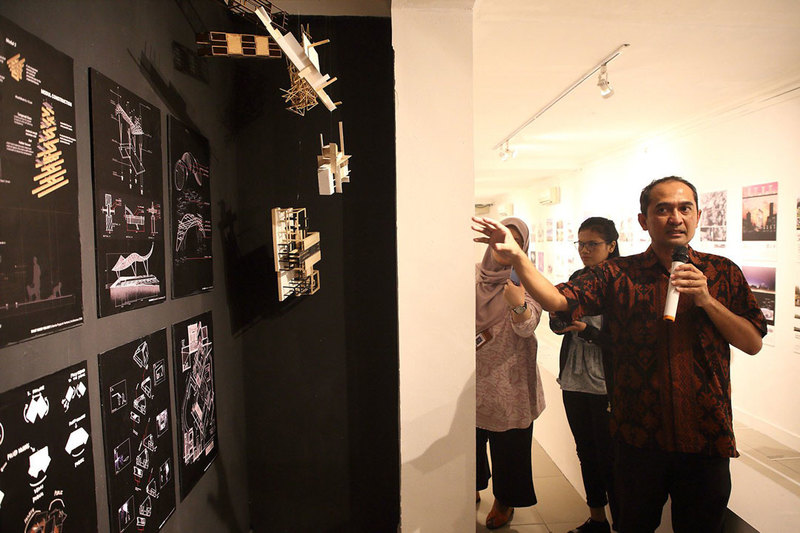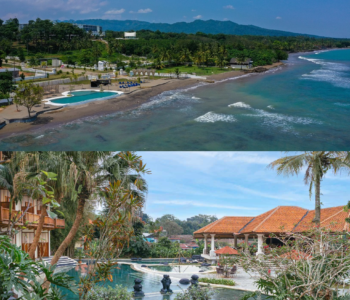
With the rapid growth of crowded urban facade and unjustified land conversion, architecture is not only the science of making a well-design and futuristic building but also magic to create a sustainable living place.
One might recognise the Kajstaden Building, Sweden’s tallest timber building in the city of Västerås. The 8,5-storey-high apartment block is built entirely with cross-laminated timber. The design studio, CF Møller Architects revealed the building as the benchmark of a sustainable future, designed with the holistic and bio-circular concept to complement surrounding landmarks and the aesthetic of its site in the industrial harbour.
In Indonesia, Rumah Palem or Palm House, designed by Indonesian Andra Matin is built in the existing natural condition without eliminating 24 palm trees that have been occupying the 411.2sqm land area in Bintaro, South Tangerang. Without sacrificing natural canopy and living organisms, the residential project is constructed with a combination of two materials consisted of concrete and wood—that’s 80% of the panel, facade and the interior built using natural material.

These two buildings are designed beyond the perception of traditional architecture which only pays attention to the building structure and its aesthetic. The future of architecture moves forward with a more ethical approach that powers the value of local products and culture, integrated with an attempt to build a mutual relationship with the surrounding environment.
The future generation of young architects play a pivotal role to reposition the traditional architecture approach that has been long oriented by human needs, going outside the box to shift the business as usual of making a building exotic and comfortable for its habitation. In early 2020, a total of 105 architecture students from various universities across the archipelago gathered to show the commitment to transforming local architecture tradition to become more ethical and sustainable during the architecture fair, AFAIR held at the National Gallery of Indonesia.

With a conscious mind and awareness towards building the future of Indonesian architecture, a total of 214 works represented by 62 universities/institutions were exhibited during a week-long event followed by number of public discussion and series of activities, to further question the impact of architecture on the connection between humans and the environment.
In collaboration with the Indonesian Association of Schools of Architecture (APTARI), the biennale exhibition brought the theme “Us Within us Without” to address the urgency in the current practice of architecture by encouraging the students to shift their intention and ideology with a more holistic approach to achieve balanced and better living environment.
Acting as the curator of the exhibit, Professor of Architecture at the University of Indonesia, Yandi Andri Yatmo said that architecture should play a critical role in responding to complex environmental and societal challenges. “Architecture needs to be reprogrammed in order to create more responsible and appropriate intervention within the existing ecological network, the diversity of culture, the peculiarity of everydayness, and the uniqueness of our society,” Yatmo said.

Shifting Paradigm of Architecture
Based on the research of current practice, Yatmo, the architecture professor who awarded Kenneth H. Murta Prize in Architecture from University of Sheffield, admitted that many architects still have a mindset using concrete materials on their design, which contradicts the local tradition of Indonesian architecture in the past which cost much low waste and carbon emissions, such as wood and bamboo. In-depth perspective, an architect must know the purpose of the architecture.
“We have our version of local wisdom that allows our architecture to be more nature friendly, more earthy, by looking back in the past. It’s not about making beautiful buildings. We have to know the value of the architecture by embracing culture, letting living organisms coexist with human living, and responding to the topology of nature to be more resilient towards disaster and other unprecedented environmental events,” Yatmo explained.
“The meaning of building needs to be more specific. The architect has to have the act of morality. The proposal of the architecture design must consider all of those factors. It’s not only utilising or occupying the land because we hit the tipping point where many negative impacts caused by land conversion. The establishment is not a friend for the environment," Yatmo added.
In existing densely populated districts or urban areas, architecture must be planned in the wider area approach, not only in the scope of establishment, by involving the natural environment as part of the system of the architecture itself embedding natural urban canopy as the filter of pollutant or powering natural elements such as water and organism for energy conservation and creating a more vertilised soil for reciprocal benefit.
“We can avoid the waste, but we could minimise it and build the architecture as the purifier to the city pollution and outcome. Without losing the core of architecture and the idea of space, we can do a better thing that transcend the standard thinking of architecture today because we don’t want architecture to begin the lifestyle that becomes the waste of everything,” Yatmo expressed.
This article is originally from paper. Read NOW!Jakarta Magazine March 2020 issue “Property, Architecture & Design". Available at selected bookstores or SUBSCRIBE here.







